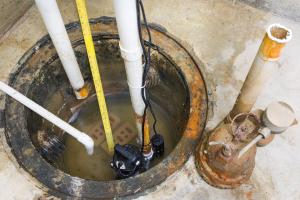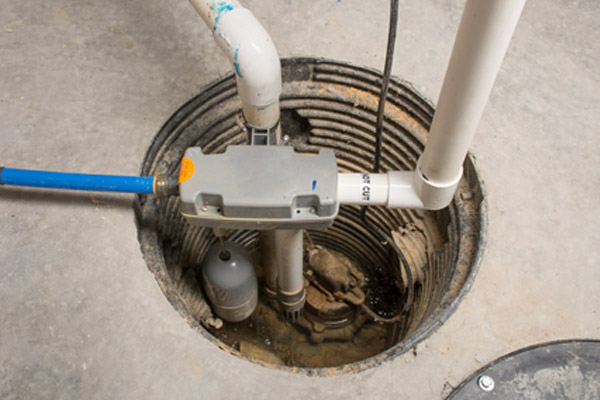Fast Solutions for Caring for a Sump Pump
Fast Solutions for Caring for a Sump Pump
Blog Article
They are making a number of great pointers relating to Steps to Cleaning Your Sump Pump Properly in general in the article beneath.

Sump pumps are important elements in lots of homes, especially in locations prone to flooding or extreme moisture. They aid protect against water damages by successfully removing excess water from cellars or crawl spaces. Nevertheless, like any other appliance, sump pumps need routine upkeep to guarantee they operate effectively when needed the most. Cleaning your sump pump is an important part of its maintenance, and comprehending just how to do it correctly can conserve you from pricey repair services and prospective calamities.
Introduction
Keeping a clean sump pump is important for its proper performance and long life. Ignoring this vital task can lead to obstructions, breakdowns, and inevitably, water damages to your property. Therefore, learning exactly how to clean a sump pump is critical for house owners who depend on these gadgets to maintain their cellars dry and safeguarded.
Indicators of a Dirty Sump Pump
Understanding when your sump pump needs cleaning is important for preventing prospective malfunctions. Some typical indicators that suggest an unclean sump pump include strange noises throughout operation, reduced water flow, and noticeable debris in the pit. If you observe any of these signs, it's necessary to cleanse your sump pump without delay to avoid any type of more concerns.
Preparing for Cleansing
Prior to you start cleansing your sump pump, it's necessary to take some security precautions. Start by shutting off the power to the pump to prevent any electric mishaps. Additionally, use suitable protective gear, such as handwear covers and safety glasses, to protect on your own from dust, particles, and potential virus.
Comprehending the Sump Pump
Prior to diving right into the cleansing process, it's essential to have a standard understanding of how a sump pump functions. Commonly mounted in a pit or basin below the basement floor, a sump pump includes a number of key elements, consisting of a pump, a float button, and a discharge pipe. When water accumulates in the pit, the float switch turns on the pump, which after that pumps the water out through the discharge pipeline, far from the building's structure.
Step-by-step Overview to Cleansing a Sump Pump
Shutting down the Power
Begin by separating the power supply to the sump pump to stop any accidents while cleaning.
Checking for Proper Functioning
Prior to reinstalling the pump, perform a fast test to make sure that the float switch triggers the pump correctly. Put some water right into the sump pit and observe the pump's operation. If everything is working appropriately, you can reassemble the pump and reconnect the power supply.
Eliminating Debris and Dust
Make use of a bucket or an inside story to eliminate any visible debris, dirt, or debris from the sump pit. Dispose of the debris properly to stop it from obstructing the pump or the discharge pipe.
Cleaning up the Pump and Drift Switch
Once the pit is clear of debris, carefully eliminate the pump from the pit. Inspect the pump and the float button for any indicators of damage or wear. Use a soft brush or cloth to clean the surfaces and remove any kind of collected crud.
Purging the System
After cleaning the pump and float button, flush the sump pit with tidy water to eliminate any continuing to be dust or debris. This will aid make sure that the pump operates efficiently and efficiently.
Upkeep Tips to Keep Your Sump Pump Clean
In addition to regular cleaning, there are several upkeep pointers you can follow to keep your sump pump in optimal condition:
Verdict
Cleaning your sump pump is an important element of its maintenance and guarantees that it operates effectively when you require it the most. By complying with the actions described in this guide and integrating routine maintenance right into your routine, you can extend the life expectancy of your sump pump and safeguard your home from water damages.
6 STEPS ON HOW TO CLEAN A SUMP PUMP PROPERLY
UNDERSTANDING SUMP PUMPS
Your sump pump plays a crucial role in protecting your home by managing and removing excess water. It primarily functions as a “shield”, guarding your basement against the damaging effects of water accumulation. The pump is housed in a sump pit in the lowest part of your basement, and its job is to pump out any water that collects there.
During heavy rainfalls or when snow melts rapidly, water can infiltrate your basement, posing potential risks like flooding, structural damage, and harmful mold growth. Here, the sump pump springs into action, pumping out the intruding water and directing it away from your home.
SAFETY FIRST
Before cleaning, remember to prioritize safety. Disconnect the sump pump from the power source to prevent any accidental electric shocks. Also, wear sturdy gloves to protect your hands from any sharp or dirty components within the pump.
REMOVE THE SUMP PUMP
After ensuring your safety, the next step is to remove the sump pump from its pit. Doing this might require careful maneuvering as you don’t want to damage any pump components. Once removed, clean the sump pit to remove any accumulated debris or sludge.
INSPECT THE PUMP
Inspect the pump for any visible signs of wear or damage. Check the power cord, float switch, and impeller housing. If any components look worn out or damaged, consider replacing them to ensure optimal performance.
CLEAN THE PUMP
Thoroughly clean the pump with warm, soapy water. Make sure to rid it of any dirt, gravel, or other debris that might impede its performance. You can use a toothbrush to clean the small, hard-to-reach parts of the pump.
REINSTALL THE SUMP PUMP
Reinstall the pump into the sump pit Make sure it’s positioned correctly to remove the water effectively Once it’s back in place, reconnect it to the power source TEST THE PUMP
Finally, pour some water into the pit to ensure the pump works correctly. It should start automatically and begin pumping out the water; if it doesn’t, check the power source and the positioning of the pump.
Remember, while cleaning your sump pump is an essential part of home maintenance, hiring a professional plumber for a thorough inspection and cleaning at least once a year is also important. This will ensure that your pump is in optimal condition, ready to protect your home from potential water damage.
BEST PRACTICES FOR CLEANING SUMP PUMP DISCHARGE PIPES
Regular Inspection: Regularly inspect your discharge pipes, especially during heavy rainfall or snowmelt periods. Look for any signs of blockage or damage. Early detection of problems can prevent serious issues down the line. Periodic Cleaning: Over time, sediment and debris can accumulate in the discharge pipes, impeding the flow of water. Regular cleaning helps keep the pipes clear and functioning efficiently. You can use a high-pressure water jet to effectively clean the pipes. Insulation During Winter: In colder climates, discharge pipes can freeze, blocking the outflow of water. Protect your discharge pipes from freezing temperatures by insulating them with foam pipe insulation. This will ensure the sump pump can continue to discharge water even in freezing conditions. Proper Positioning: The discharge pipe should be positioned to direct water away from your home’s foundation. Improper positioning can lead to water seeping back into the basement. Ensure the pipe is long enough and angled correctly. Installation of a Check Valve: A check valve prevents water from flowing back into your sump pit after the pump has pushed it out. Installing a check valve helps maintain the efficiency of your sump pump and reduces the risk of flooding. Minimize Pipe Turns: Every curve or turn in the discharge pipe can decrease the efficiency of water flow. By minimizing turns and bends in your discharge pipe, you can increase the efficiency of your sump pump. https://www.fullspeedplumbing.com/how-to-clean-a-sump-pump-properly9999/

As a serious person who reads on How to Care for Your Sump Pump, I assumed sharing that excerpt was important. Sharing is good. Helping people is fun. We enjoy reading our article about How To Effectively Clean A Sump Pump.
Call Today Report this page